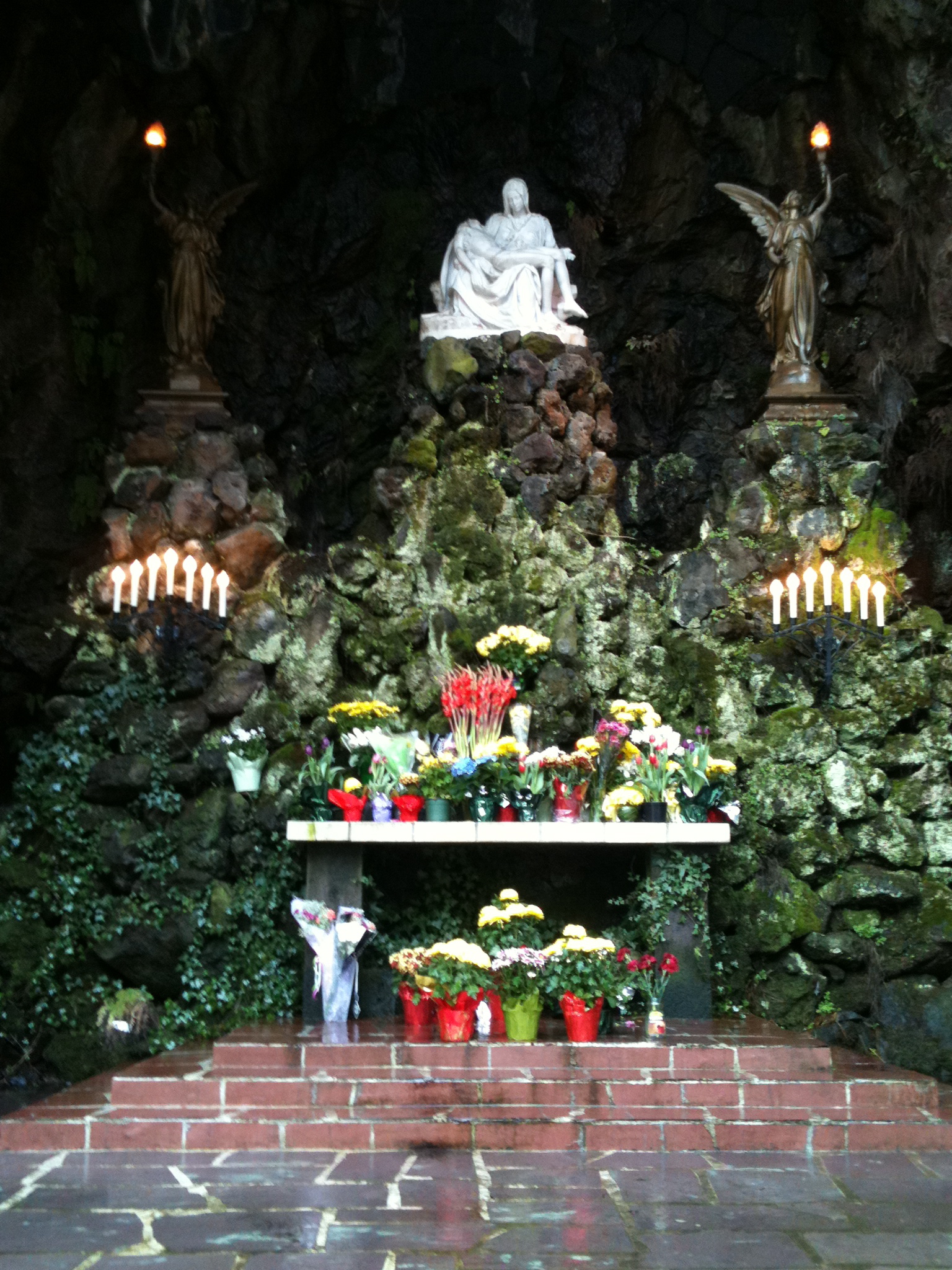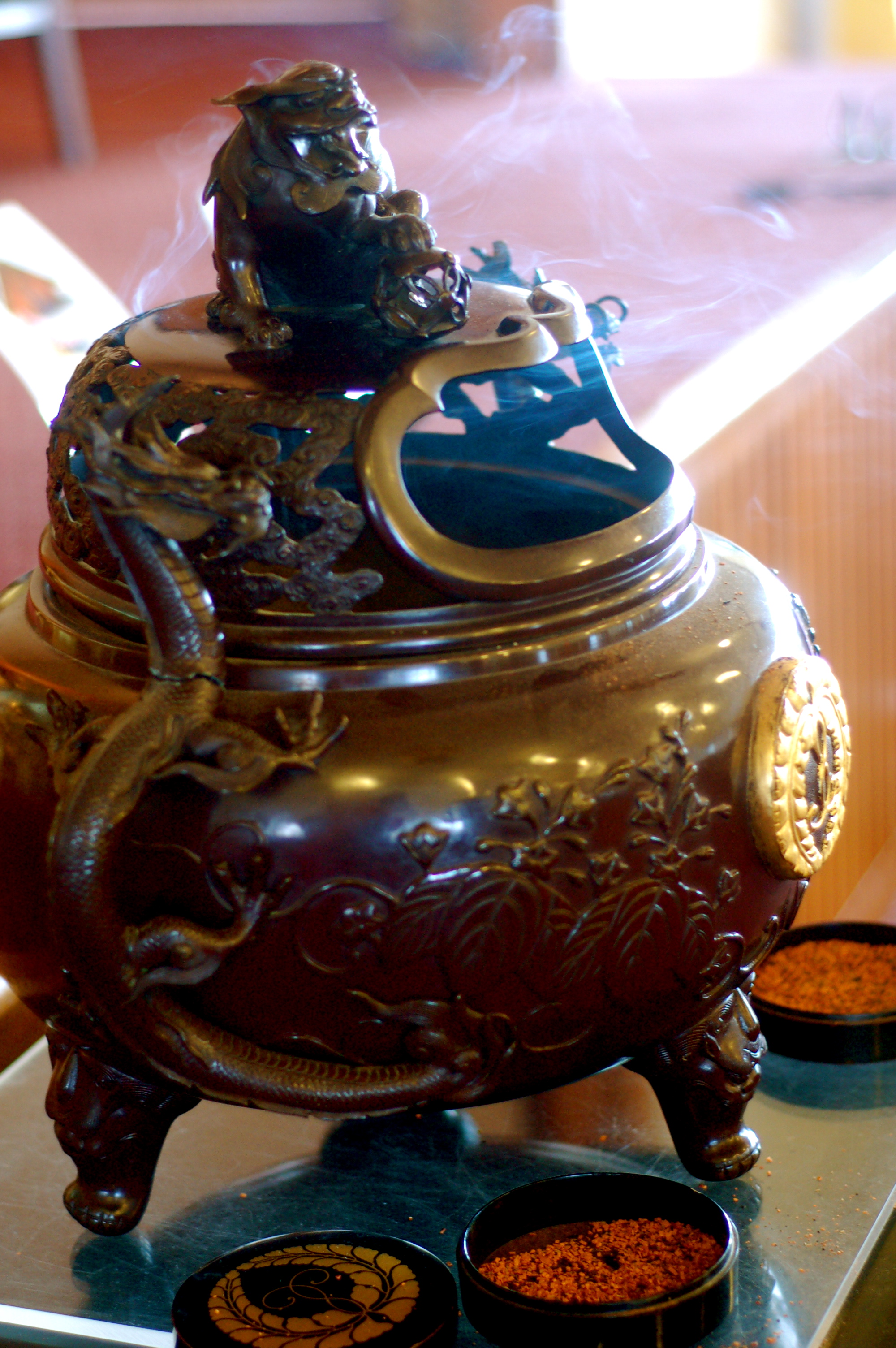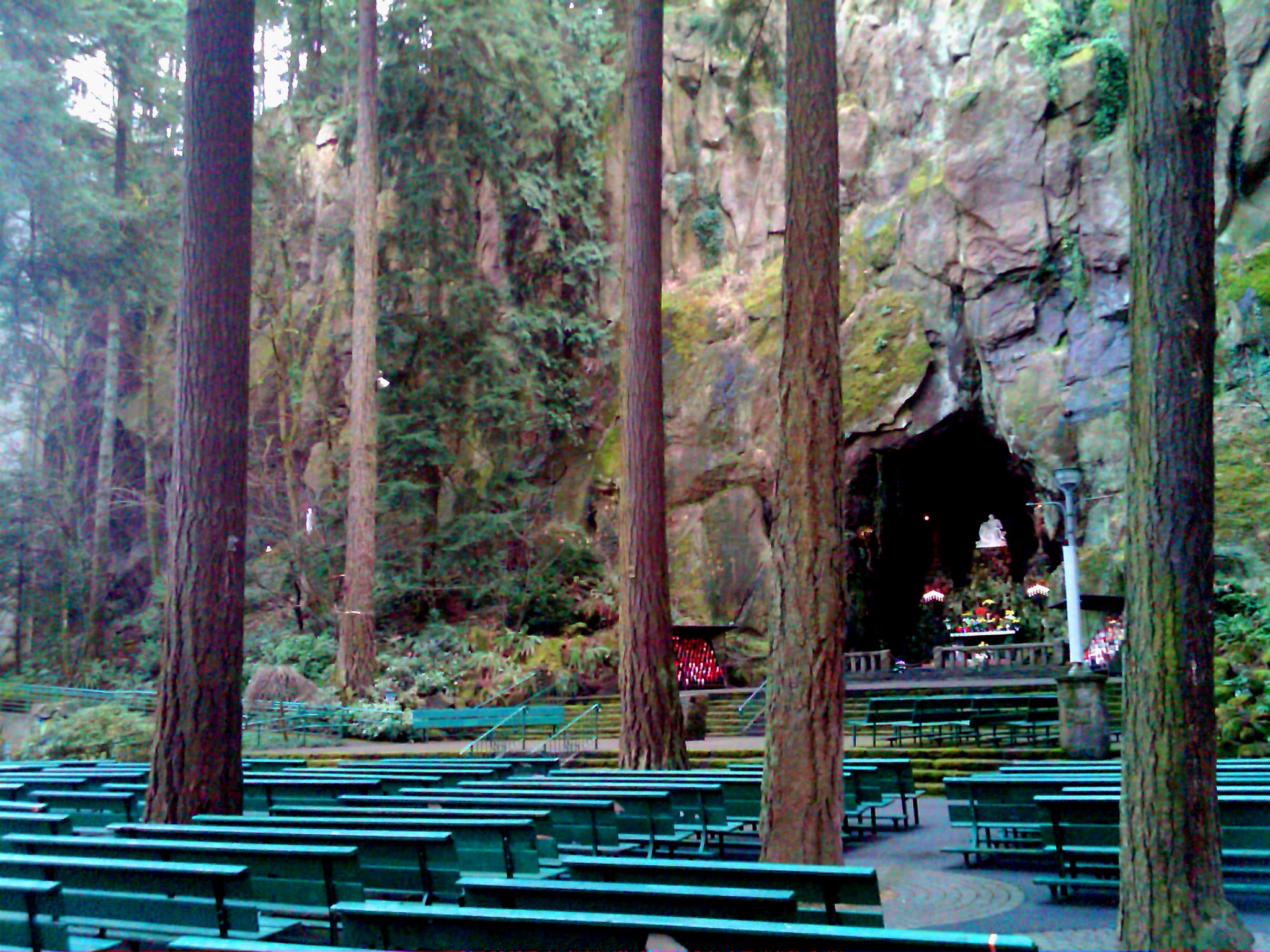
This Sunday, Amanda, her kids and I dropped by The Grotto, a.k.a. the National Sanctuary of Our Sorrowful Mother. Located on NE Sandy at 85th, it’s a 65-acre sacred oasis plopped into the middle of Portland’s crackerbox-apartment-and-lingerie-parlor district. Inside, however, from the moment the priests and their entourage walked down the chapel’s center aisle holding aloft the crucifix and an ornate, Franklin Mint-esque Bible in procession, I knew I was in for some serious religion. The message was clear: God is in the house, so sit down, shut up and pray on. Whatever your religious persuasion might be, one thing is certain: the air of reverence is as thick as clam chowder. And, just in case you forget to be holy, a large sign above the altar reminds you in Latin, “SANCTUM SANCTUM SANCTUM.”
Like Disneyland or the Oregon State Penitentiary, The Grotto is a destination experience. Its park-like campus is replete with trails, sculptures of Jesus and Mary in various states of bliss and agony and a 14-part outdoor Stations of the Cross depicting in bronze Jesus’ final moments, eerily foreshadowing Mel Gibson’s movie about the same subject.
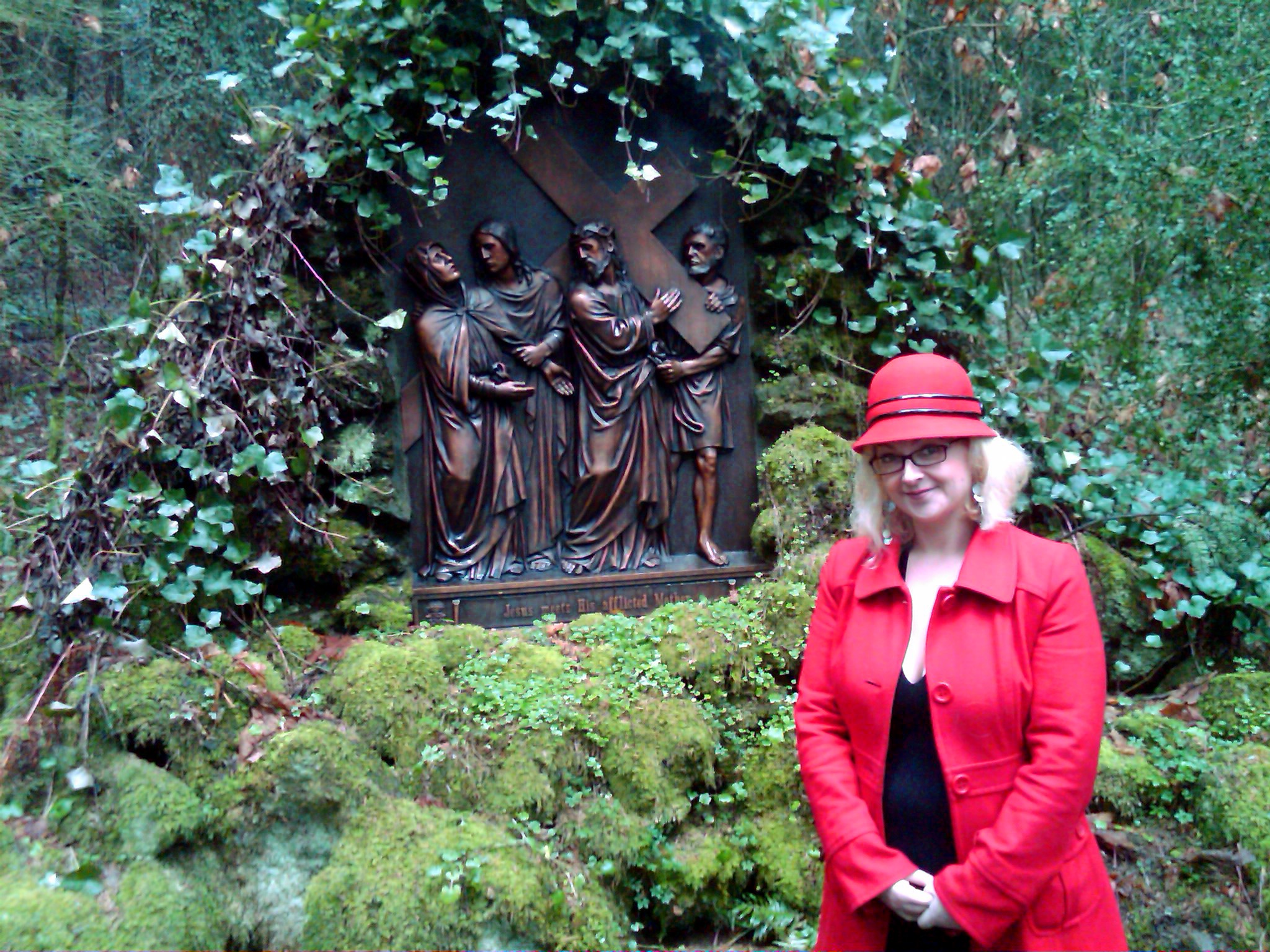
For me, the pièce de résistance is the marble replica of Michelangelo’s Pietà ensconced in the church’s namesake grotto, which also serves as an outdoor chapel. No doubt, this is a favorite spot for Portland’s well-heeled hippie Catholics to tie the knot. At $1900 dollars a pop, you’d be better be damned sure she’s the right one for you.
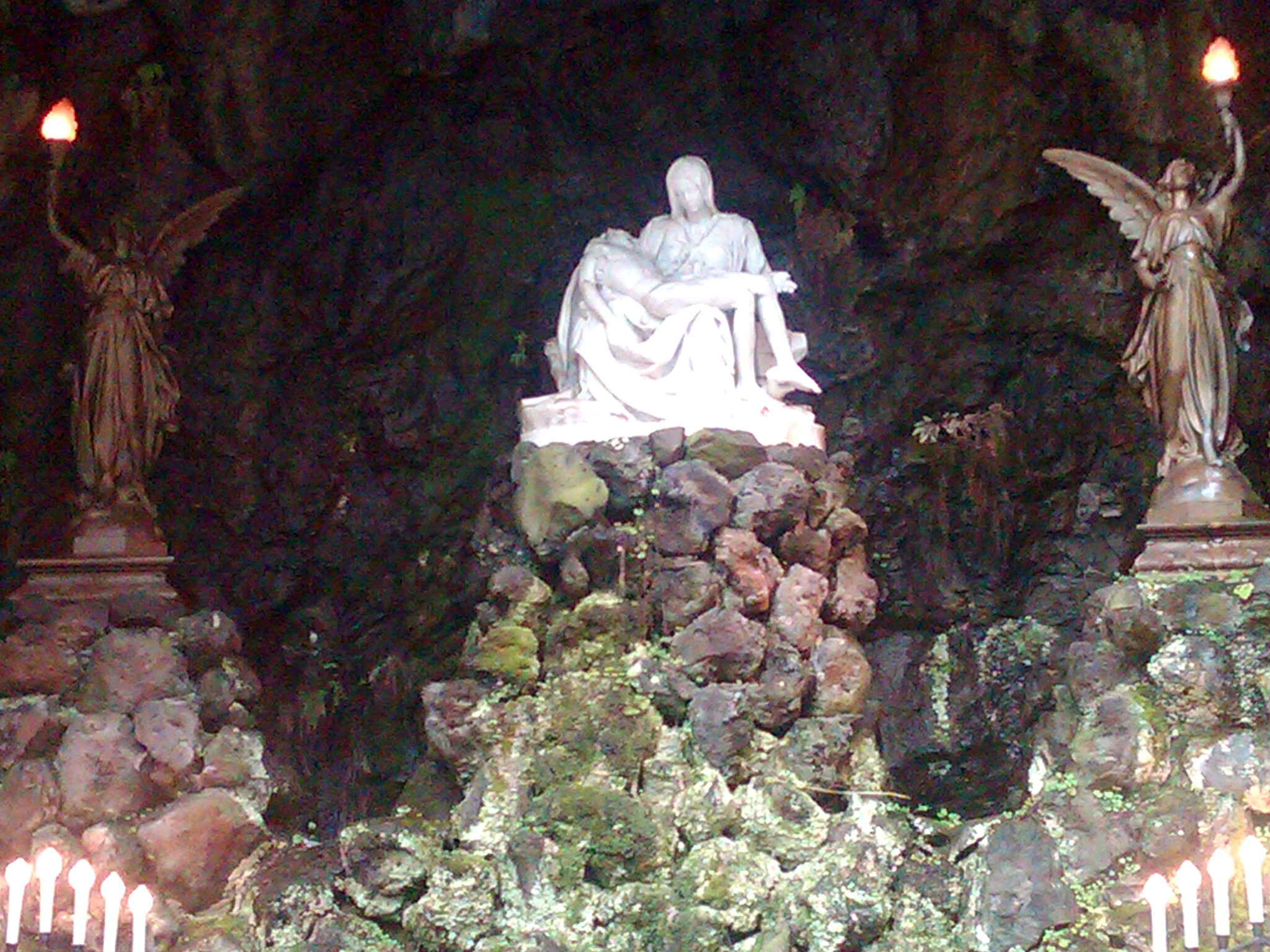
But back to the service.
So Amanda, her kids and I were sitting in the pews, minding our own business, when God showed up. That’s when I started looking around at the artwork (quite lovely) and the architecture (quite tall) with a new set of eyes. Everything about Catholicism is geared to draw the worshiper to one conclusion: God is the boss of you and me. He adheres to a strict hierarchy, with His priests serving as middle management. When they read the Sacred Words of God Himself from the Holy Bible, they first kneel before The Book; at the conclusion of the reading, the congregation follows up with a solemn “Amen.” Almost like the reception David Sedaris gets in some quarters.
Like most Catholic churches, this one features an unusually high ceiling, which serves two purposes. Not only does it point up to God, but it also has the concomitant effect of making the worshiper feel rather puny. In the Chapel of Mary, the eternal Virgin floats near the ceiling, caught in the act of coronation. “BEHOLD THY MOTHER,” a superscription commands. That’s right. Your mother is watching. So get your hands out of your pockets—what are you playing with, anyway? Or, in my case, get your mind off of fantasizing about boinking the deacon’s daughter, or of watching your girlfriend boink her. If this Mother is Sorrowful, it’s probably because of something I did.
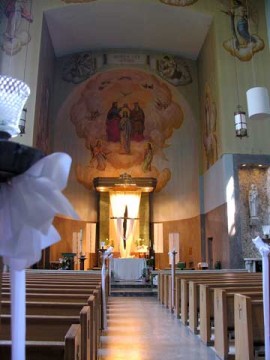
Sure, there are some people who need to be told what to do. They can’t function without a higher power looking sternly over their shoulder while they contemplate that fifth shot of Jägermeister. Unfortunately for Our Sorrowful Mother, I had enough of all that as a Jehovah’s Witness, with its rules suggestions about how to dress, wear my facial hair, what to watch on TV, what movies to rent (but not tell anyone you saw), etc etc. etc. You’d think that if the religion had really had done its job—teaching you how to live your life—at a certain point you’d stop needing it. But most religions aren’t very good about that part of the transaction.
The way psychologist M. Scott Peck sees it, spiritual growth is a four-stage process. It begins with (1) unlearned chaos and moves—often via a religious conversion—into (2) blind faith in authority figures, which eventually morphs into (3) a period of skepticism and questioning to finally arrive at (4) mystical, enlightened awe and reverence at the beauty and diversity of nature.
The way I see it, Catholicism (not to mention Jehovah’s Witnessism) is hung up on Stage Two. Originating in the ecstatic Stage One chaos of early Christianity, it imposed order and ritual on a growing religious movement. It was only a matter of time before Stage Three—the Protestant Reformation—came along, nailing its 95 Theses on the Church’s front door like a rebellious teenager arriving home drunk at three in the morning. Which brings us pretty much to today. When you consider the number of church dropouts in the world who describe themselves as spiritual, but not religious, it would seem that we live in a society that, at the very least, aspires to Stage Four Mysticism. Even people nominally enrolled in one faith or another often have a Stage Four outlook. However, as I looked around at the Grotto’s faithful, standing, kneeling and genuflecting in penitential unison, the Stage Four-ers apparently were at brunch.
To the Catholics, all mankind is stuck in Stage Two, perennially sinful and in need of a micromanaging god (and a guilt-tripping Mother Mary) to hold out the carrot of heaven and the ass-paddle of hell just to get his followers’ sorry butts out of bed on Sunday morning.
I don’t buy it. And if God has half the sense of humor I hope he does, I don’t think he could either. Though if he’s looking for a great place to relax on a Sunday morning, he could do worse than to drop in on The Grotto. I suggest that He bring a picnic. That Pietà is quite beautiful when the sun hits her just so.
Grotto: Sinning Ain’t No Picnic
This Sunday, Amanda, her kids and I dropped by The Grotto, a.k.a. the National Sanctuary of Our Sorrowful Mother. Located on NE Sandy at 85th, it’s a 65-acre sacred oasis plopped into the middle of Portland’s crackerbox-apartment-and-lingerie-parlor district. Inside, however, from the moment the priests and their entourage walked down the chapel’s center aisle holding aloft the crucifix and an ornate, Franklin Mint-esque Bible in procession, I knew I was in for some serious religion. The message was clear: God is in the house, so sit down, shut up and pray on. Whatever your religious persuasion might be, one thing is certain: the air of reverence is as thick as clam chowder. And, just in case you forget to be holy, a large sign above the altar reminds you in Latin, “SANCTUM SANCTUM SANCTUM.”
Like Disneyland or the Oregon State Penitentiary, The Grotto is a destination experience. Its park-like campus is replete with trails, sculptures of Jesus and Mary in various states of bliss and agony and a 14-part outdoor Stations of the Cross depicting in bronze Jesus’ final moments, eerily foreshadowing Mel Gibson’s movie about the same subject.
For me, the pièce de résistance is the marble replica of Michelangelo’s Pietà ensconced in the church’s namesake grotto, which also serves as an outdoor chapel. No doubt, this is a favorite spot for Portland’s well-heeled hippie Catholics to tie the knot. At $1900 dollars a pop, you’d be better be damned sure she’s the right one for you.
But back to the service.
So Amanda, her kids and I were sitting in the pews, minding our own business, when God showed up. That’s when I started looking around at the artwork (quite lovely) and the architecture (quite tall) with a new set of eyes. Everything about Catholicism is geared to draw the worshiper to one conclusion: God is the boss of you and me. He adheres to a strict hierarchy, with His priests serving as middle management. When they read the Sacred Words of God Himself from the Holy Bible, they first kneel before The Book; at the conclusion of the reading, the congregation follows up with a solemn “Amen.” Almost like the reception David Sedaris gets in some quarters.
Like most Catholic churches, this one features an unusually high ceiling, which serves two purposes. Not only does it point up to God, but it also has the concomitant effect of making the worshiper feel rather puny. In the Chapel of Mary, the eternal Virgin floats near the ceiling, caught in the act of coronation. “BEHOLD THY MOTHER,” a superscription commands. That’s right. Your mother is watching. So get your hands out of your pockets—what are you playing with, anyway? Or, in my case, get your mind off of fantasizing about boinking the deacon’s daughter, or of watching your girlfriend boink her. If this Mother is Sorrowful, it’s probably because of something I did.
Sure, there are some people who need to be told what to do. They can’t function without a higher power looking sternly over their shoulder while they contemplate that fifth shot of Jägermeister. Unfortunately for Our Sorrowful Mother, I had enough of all that as a Jehovah’s Witness, with its **rules** suggestions about how to dress, wear my facial hair, what to watch on TV, what movies to rent (but not tell anyone you saw), etc etc. etc. You’d think that if the religion had really had done its job—teaching you how to live your life—at a certain point you’d stop needing it. But most religions aren’t very good about that part of the transaction.
The way psychologist M. Scott Peck sees it, spiritual growth is a four-stage process. It begins with (1) unlearned chaos and moves—often via a religious conversion—into (2) blind faith in authority figures, which eventually morphs into (3) a period of skepticism and questioning to finally arrive at (4) mystical, enlightened awe and reverence at the beauty and diversity of nature.
The way I see it, Catholicism (not to mention Jehovah’s Witnessism) is hung up on Stage Two. Originating in the ecstatic Stage One chaos of early Christianity, it imposed order and ritual on a growing religious movement. It was only a matter of time before Stage Three—the Protestant Reformation—came along, nailing its 95 Theses on the Church’s front door like a rebellious teenager arriving home drunk at three in the morning. Which brings pretty much us to today. When you consider the number of church dropouts in the world who describe themselves as spiritual, but not religious, it would seem that we live in a society that, at the very least, aspires to Stage Four Mysticism. Even people nominally enrolled in one faith or another often have a Stage Four outlook. However, as I looked around at the Grotto’s faithful, standing, kneeling and genuflecting in penitential unison, the Stage Four-ers apparently were at brunch.
To the Catholics, all mankind is stuck in Stage Two, perennially sinful and in need of a micromanaging god (and a guilt-tripping Mother Mary) to hold out the carrot of heaven and the ass-paddle of hell just to get his followers’ sorry butts out of bed on Sunday morning.
I don’t buy it. And if God has half the sense of humor I hope he does, I don’t think he could either. Though if he’s looking for a great place to relax on a Sunday morning, he could do worse than to drop in on The Grotto. I suggest that He bring a picnic. That Pietà is quite beautiful when the sun hits her just so.




